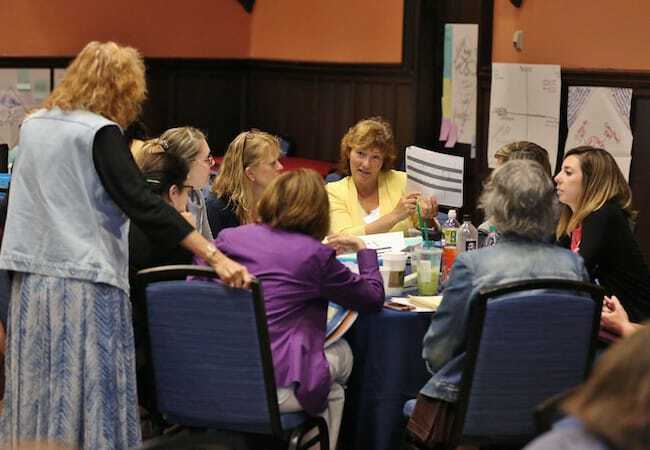
Children enter kindergarten and first grade at Philadelphia’s Gilbert Spruance School with different levels of education, and different linguistic and cultural backgrounds. But Danielle Murray, a school-based teacher leader for literacy at Spruance, said they can all tell stories. And that means the teachers of Spruance have a powerful tool for introducing all of their students to writing and reading: the Kid Writing approach.
“Kid Writing gives kids the tools to start and share their stories in pictures and words,” Murray said. “The teacher and the kid can say I see a tree, and they can label that, and then add the words. It creates a common language.”
Since families at Spruance speak 39 languages, Murray said Kid Writing—which follows second-language acquisition theory—brings students and teachers together.
Last month, Murray told teachers from around the nation about the impact Kid Writing has had at Spruance at the National Writing Project Institute on Kid Writing, hosted by the Philadelphia Writing Project, based at Penn GSE.
For four days, educators from around the country learned about the approach that is designed to accelerate the reading and writing skills of young learners through structured activities that help teachers individualize instruction and develop students’ phonics, spelling, and writing skills.
In the approach, adults work closely with children, first by getting them to think about a story they want to share. They will then help the child draw out the story, called pre-writing. The child will then write out the story using letters that represent the sounds they know. The adults will then read through the child’s story, highlighting the letters they got correct, and sounding out and writing new letters. In the beginning, the approach isn’t about writing complete sentences. It’s about helping children convey information.
The approach can sound simple, but it empowers students, said Diane Waff, a Penn GSE professor of practice and director of the Philadelphia Writing Project. Once children see that they can communicate and be heard, they are more motivated as readers and writers.
“So many times, especially in places we see as under-resourced, adults think kids don't know anything,” Waff said. “But kids have experiences and lives outside of school. Kids know so much. Kid Writing is about capturing that student voice and just showing how much they do know.”
Kid Writing was developed in Philadelphia in the 1990s by PhilWP Teacher Consultants Eileen Feldgus and her colleague Isabel Cardonick, former teachers in the School District of Philadelphia. At the institute, Feldgus offered a Kid Writing demonstration. She described how kindergarteners who started the year without knowing a single letter were writing several sentence mini-stories by the end of the year.
“We have limited time with our kids, so we have to make every minute as powerful as possible,” said Feldgus. “We haven’t found anything more powerful than Kid Writing.”
Melissa Lowe, a teacher attending the institute from Louisville, Kentucky, said her four days in Philadelphia would change how she and her district will approach language lessons.
“As a first-grade teacher, I think this is exciting because we’re meeting kids where they are,” Lowe said. “Before, when kids started drawing, we were told to stop them. Now, we can see that's pre-writing, it's them developing their story. I think it will be eye-opening.”
